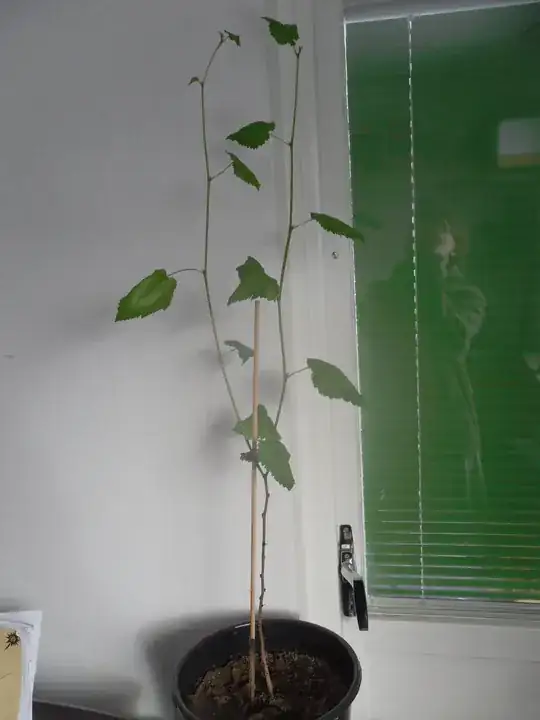Etiolation, or insufficient light strength, is a partial explanation - this tree is deciduous and normally would be dormant at this time of year. However, the process of thigmomorphogenesis is also missing. Thigmomorphogenesis refers to movement - when a plant is outside, particularly one with a tall, woody stem, it will be exposed to air movement. That air movement might vary between a gentle wafting breeze, or a force nine gale, but the movement of air means the plant develops a much thicker, more resilient stem or trunk. It's the reason trees are not solidly tied to a rigid stake from top to bottom when planted, to allow some movement to take place.
I imagine where you live that warmer weather will not arrive for another two or three months, but when it does, move the plant outside for increasing periods during the day to gradually harden it off, until its warm enough to leave it outside overnight. After a week or so of that, and a degree of certainty that the weather is now balmy enough for the tree, plant it somewhere as sunny as possible, and fairly open, but not in an extremely windy spot, given its current condition. Prepare the planting area beforehand by digging it over well and incorporating compost or humus rich material such as composted manure.
You will, unfortunately, have to wait for the tree to become fully dormant to carry out pruning/training, which means at least a month after its leaves have fallen; pruning at other times causes excessive sap bleeding. At that point, if its still looking etiolated, consider cutting back the top parts to try to encourage a thicker trunk. You will need to stake it initially when you plant it out - the stem is so thin there is a high risk of its snapping otherwise.
In the meantime, if you have a fan or a fan heater you can set on cool or cold, and on a low speed, set it near the plant so that the air is moving around it to encourage the stem to thicken, and increase its light levels if at all possible, though I think that will be difficult, given the shortness of daylight hours currently where you are.
